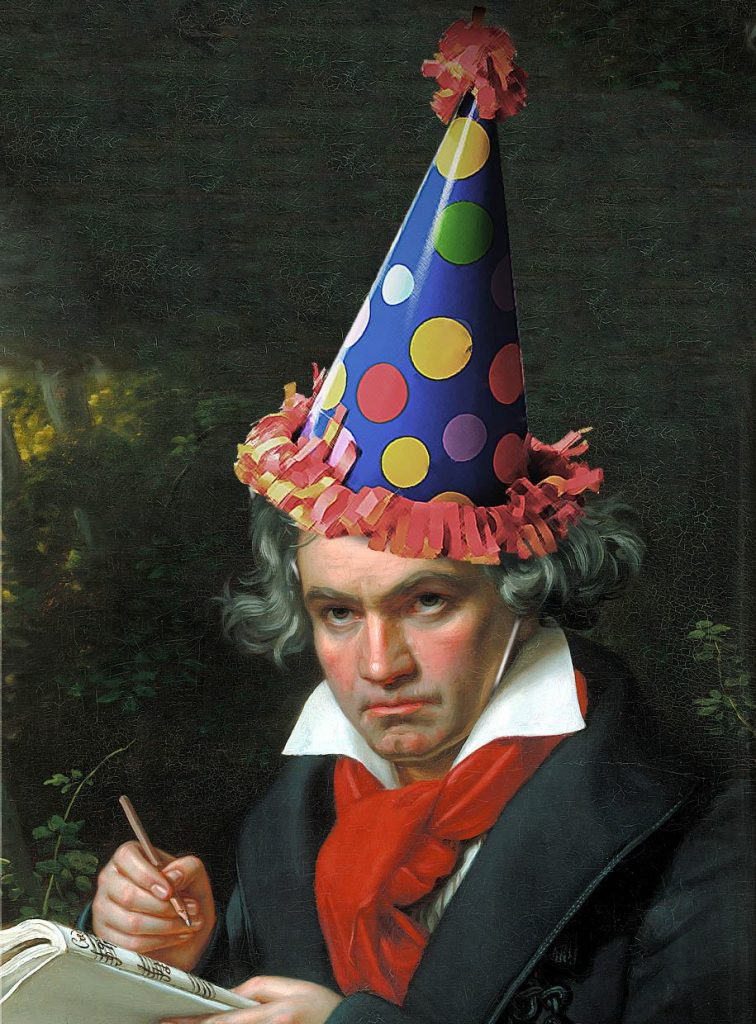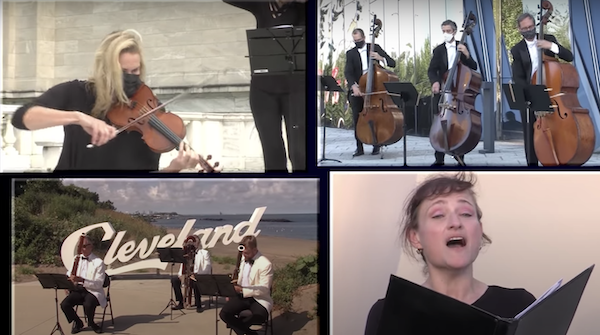by Jarrett Hoffman

BEETHOVEN’S 250TH (WE THINK):
Today is a day that many musicians and presenters circled on the calendar a long time ago. That’s because Ludwig van Beethoven was likely born on December 16, 1770 (based on the record of his baptism on the 17th), making this not just any anniversary, but a nice, big, round one: 250.
Many celebratory plans — and the seasons that encompassed them — have had to be cancelled due to the pandemic, but happily some were able to take place early this year or last year. And since March, through a combination of live streams, pre-recorded concerts, and album releases, we’ve still had plenty of Beethoven to hear from musicians and organizations residing in Northeast Ohio or with connections to the area.
I’ll cover a few examples here, the first one happening as recently as last night. Beginning at 12:01 am, Oberlin Conservatory faculty and alums played 17 of the composer’s 32 piano sonatas. Fortunately for them, it was pre-recorded, and fortunately for us, it’s now available to stream on-demand.
Speaking of the piano sonatas, this past weekend Daniel Shapiro continued his journey through the complete set with a recital on the Music From The Western Reserve series, now available on YouTube. It’s his third time taking on all 32. As he told Daniel Hathaway in an interview before beginning the project in September, “The first time I did the whole thing within a month — two a week for four weeks. That was kind of crazy. The second time it was one concert per month, which is what I’m hopefully doing now.” Stay on the lookout as his name continues popping up next to Beethoven’s in the new year.
And speaking of Beethoven cycles, before the pandemic arrived, violinist James Ehnes and pianist Andrew Armstrong were able to perform two-thirds of their three-part series covering the composer’s complete violin sonatas for the Cleveland Chamber Music Society. Now they plan to finish up in May 2021. What makes this project all the more compelling is that it sprung out of a snafu and lightning-quick thinking from Ehnes — a way to turn a lost day of recording into an opportunity. As Armstrong told Hathaway in an interview, “I’m always thrilled when he invites me on one of those crazy rides.”
Moving onto more music for strings, the Miró Quartet not only recorded the complete Beethoven string quartets last year — read Jacqueline Armbruster’s review here — they also played the complete set this past summer for the Orcas Island Chamber Music Festival. In an interview, cellist Joshua Gindele told Mike Telin about making that project come together during the pandemic, and how the relationship among the players “has always been built on trust.”
It’s difficult to categorize and chart the evolution of any composer without boxing them in, and that’s certainly true of Beethoven. Nicholas Stevens grappled with that issue in a review of the Akron Symphony and Chorus’s April 2019 performance of the “Eroica” Symphony and Mass in C:
Most musicians and music history buffs recount Beethoven’s life as a three-part story of artistic progress, from early indebtedness to precedent, through the heroic rupturing of tradition, then on to strange yet sublime experiments. However, smart concert programming can remind us that this central figure of the classical pantheon, like most artists, tended to zigzag.
One other historical misconception about Beethoven is the extent of his deafness. As Kent State University musicology professor Theodore Albrecht shared with Daniel Hathaway in April, his research has turned up the suggestion that Beethoven could still hear — if not well — at the premiere of the Ninth Symphony. “All the stone-deaf Beethoven stories go out the window,” the scholar said. (Read more here about Albrecht’s research project of translating Beethoven’s 139 “Conversation Books” for the first-ever English edition.)
And finally, the tragedy of COVID-19 has for good reason overshadowed Beethoven this year, but that composer’s music has also been a source of inspiration and optimism during these difficult times. On that note, The Cleveland Orchestra and Cleveland Orchestra Chorus stopped by several iconic public spaces across Greater Cleveland to perform the “Ode to Joy” from Symphony No. 9 a few months ago — watch here on YouTube. Even if you’re not in the mood, which is entirely understandable these days, you might just find it irresistible, or perhaps comforting.



